Deinterlace filter | Interlaced to progressive
The deinterlace filter is a technique in video editing that is used to convert interlaced video formats to progressive formats.
Interlaced video is a method of displaying images in which the image is divided into two half-images (fields): one for the odd lines and one for the even lines. This technique was originally used to save bandwidth and enable smooth playback on the tube televisions of the time.
Deinterlacing combines these two fields into a single complete image, creating a progressive video where each frame is displayed at full resolution.
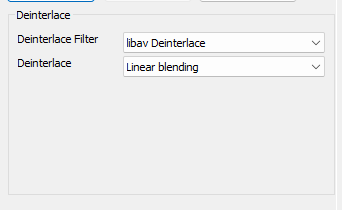
Advertisement
Step 1: Select the "Filter/Preview" tab and click the "Video Track" tab
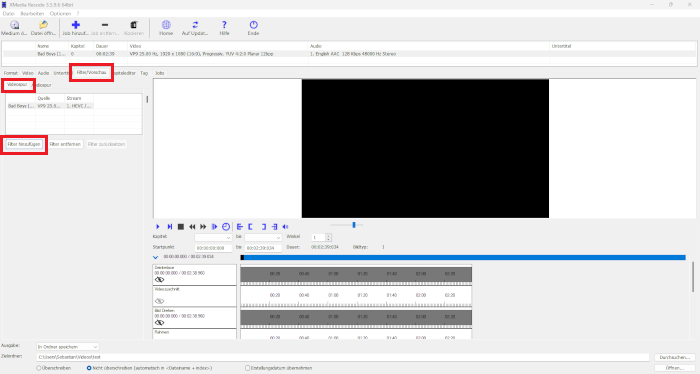
Step 2: Select Deinterlace Filter
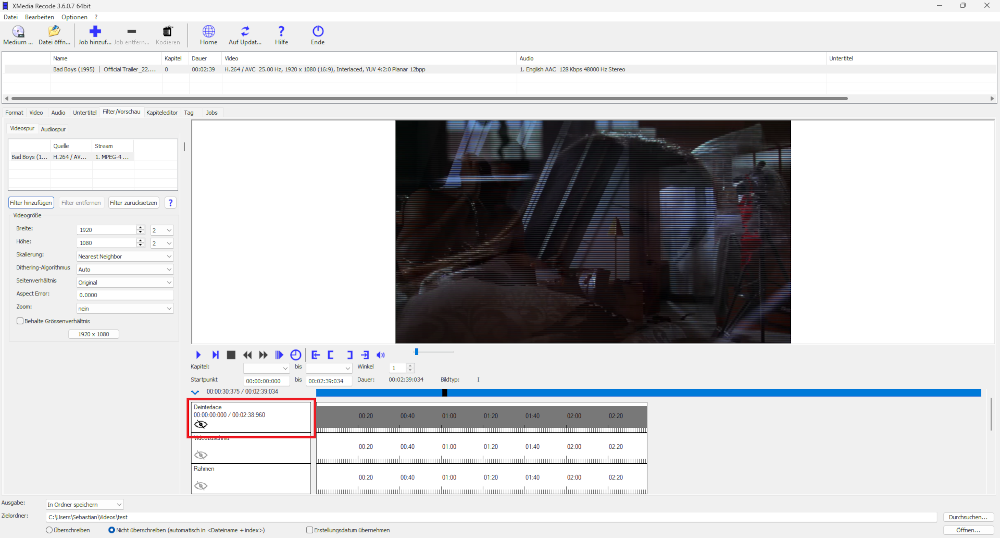
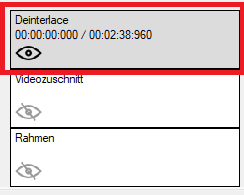
Advertisement
Deinterlace Filter
AThe following filters are available as deinterlace filters:
- libav Deinterlace
- Yadif
- Adaptive Kernel Deinterlacing
- mcDeinterlace
- Weston 3 Field Deinterlace
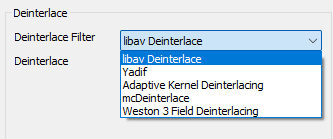
Yadif Deinterlace-Filter (Yet Another DeInterlacing Filter)
The Yadif Deinterlace filter is an advanced method for improving video quality in interlaced (line-by-line) formats. Yadif is a very popular deinterlacing algorithm used in many video players and editors because it provides high image quality and good performance.
The Yadif filter works with a process known as interlaced-to-progressive conversion. The filter uses a motion compensation technique to analyze the motion in the image and combine the two interlaced fields (odd and even lines) together. This helps to minimize the typical artifacts such as "ghosting" or "zigzag" patterns that often occur with simple deinterlacing techniques.
Mode
Specifies the interlacing mode to apply
You can choose from
- 1 frame for each frame
- 1 frame for each field
- 1 frame for each frame, skip the spatial interlacing check
- 1 frame for each field, but skip the spatial interlacing check

Order
Specifies the field parity assumed for the input interlaced video.
You can choose from
- Auto
- Top field first
- Bottom field first
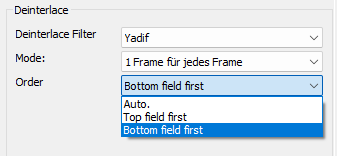
mcDeinterlace (Motion-Compensation Deinterlacing)
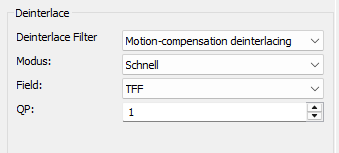
The Motion-Compensation Deinterlacing Filter is an advanced algorithm for converting interlaced (line-by-line) video into a progressive format. It aims to more accurately reconstruct movements within the video to achieve better image quality and smoother transitions.
This filter uses motion information between fields to make interpolation smarter and more realistic.
Modus
You can choose from
- Fast
- Medium
- Slow
- extra slow
Field
Specifies the field parity assumed for the input interlaced video.
You can choose from
- Top field first
- Bottom field first
QP
Block quantization (QP) parameters determine how detailed or coarse the motion information and frame interpolation is calculated by setting the "block size" and the accuracy of the motion compensation.
A lower block quantization value means more precise calculation of the motion data and more detailed interpolation of the movements. This results in better image quality, especially for fast movements, as the filter can detect and correct finer differences in the motion between adjacent fields.
A higher block quantization value results in a coarser calculation of the motion data and a less accurate interpolation. This can lead to visible artifacts or less smooth image reproduction in complex movements, but reduces the computational effort.
Adaptive Kernel Deinterlacing
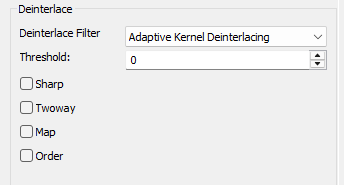
Adaptive Kernel Deinterlacing Filter is an advanced deinterlacing algorithm developed by Donald Graft. This filter aims to improve the image quality of interlaced videos by interpolating between fields in a more adaptive and accurate manner. The filter uses a technique called "Adaptive Kernel Interpolation".
The "Adaptive Kernel" refers to a technique in which the filter dynamically adjusts the way the fields are interpolated based on the motion and details in the image. Instead of using a fixed method for all areas of the image, the filter analyzes the local structure of the image and selects the best "kernel" or algorithm to connect the fields together.
Donald Graft's Adaptive Kernel Deinterlacing Filter is a sophisticated deinterlacing algorithm that reacts to the current image situation and optimizes the interpolation of fields. This results in better image quality, a reduction in artifacts and more flexible processing that works well in both still and motion-intensive scenes.
Threshold
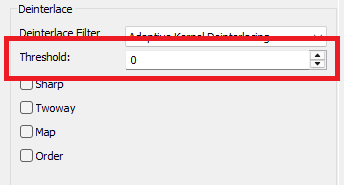
Set the threshold that affects the tolerance of the filter when determining if a row of pixels needs to be processed. It must be an integer in the range [0,255] and the default is 10.
A value of 0 causes the process to be applied to all pixels.
Sharp
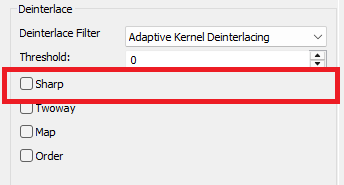
Activates additional sharpening, resulting in sharper images
Twoway
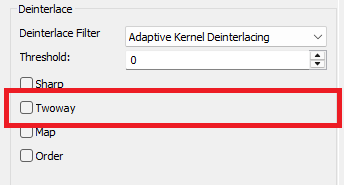
Enables bidirectional sharpening
Uses both the previous and next field to calculate the current image for better motion compensation results and smoother image display.
Map
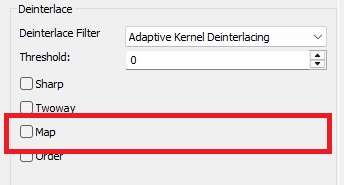
Visualizes the interpolation method used.
Color-coded to indicate which interpolation kernels are used in different areas of the image. Helps monitor filter adjustment and detect possible artifacts.
Order
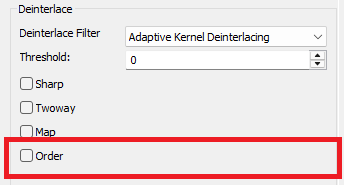
Determines the order of the fields (whether field 1 or field 2 is processed first).
Changes the order in which fields are combined, which may result in better quality for certain imagery.
Weston 3 Field Deinterlacing
The Weston 3 Field Deinterlacing Filter is a special method to efficiently combine these fields by analyzing three consecutive fields of a video. This achieves higher image quality by not only looking at the neighboring fields, but also taking into account the temporal behavior between multiple image fields.
The filter uses data from three consecutive fields to reconstruct a progressive image, improving the visual quality of fast movements and details in the image.
Filter
The filter parameters determine how the filter analyzes and processes the interlaced image to convert it into a progressive format.
You can choose from
- Simple
- Complex
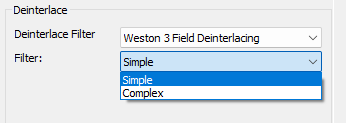
| Before | After |
 |
 |
